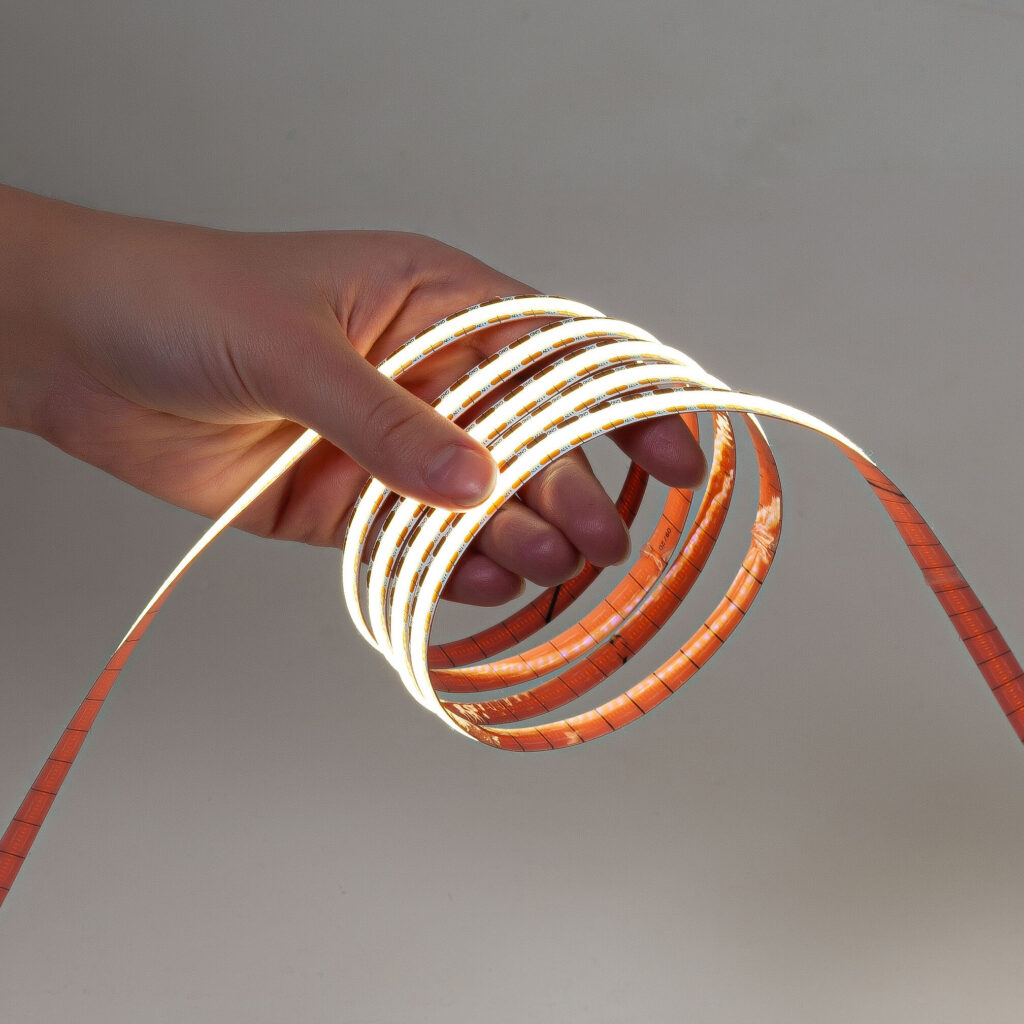Introduction
Lighting is an essential aspect of our daily lives. However, it also consumes a significant amount of energy, which can lead to higher electricity bills. Fortunately, with the advancement of technology, there are now energy-efficient lighting options available, such as LED strips. In this blog post, we will discuss why switching to LED strips can save you money on your energy bill.
What are LED Strips?
LED stands for Light Emitting Diode, which is a semiconductor device that converts electricity into light. LED strips are flexible circuit boards with tiny LED lights that emit light when electricity is passed through them. These strips can be cut to any length, making them a versatile lighting solution for any space.
Energy Efficiency
LED strips are much more energy-efficient than traditional lighting, using less electricity to produce the same amount of light. According to the U.S. Department of Energy, LED lighting is up to 80% more efficient than traditional incandescent lighting. This is because LED lights convert most of the energy they consume into light, whereas traditional bulbs produce a significant amount of heat, which is wasted energy.
Long Lifespan
LED strips have a much longer lifespan compared to traditional lighting. LED strips can last up to 50,000 hours or more, while traditional bulbs typically last only around 1,000 hours. This means that you will need to replace LED strips less frequently, saving you money on replacement costs.
Lower Heat Emissions
LED strips emit very little heat compared to traditional lighting. This means that they are less likely to cause fires or damage to surrounding objects. Traditional lighting can get very hot, which can cause discomfort or even pose a fire risk if they come into contact with flammable objects.
Lower Maintenance Costs
LED strips require very little maintenance compared to traditional lighting. As mentioned earlier, they have a much longer lifespan and do not require frequent replacements. They are also much more durable and resistant to shocks and vibrations. This means that they are less likely to break or malfunction, saving you money on maintenance costs.
Customizable Lighting
LED strips are highly customizable, allowing you to adjust the color, brightness, and even the direction of the light. This means that you can create the perfect ambiance for any space. You can use LED strips to highlight specific areas or objects in your home, creating a unique and personalized lighting solution.
Energy Savings
Switching to LED strips can lead to significant energy savings, which can translate into lower energy bills. According to Energy Star, a U.S. Environmental Protection Agency program that promotes energy efficiency, replacing traditional lighting with LED lighting can save you up to 75% on your energy bill. This is because LED lighting requires less electricity to produce the same amount of light.
Conclusion
Switching to LED strips can save you money on your energy bill while providing you with a high-quality, customizable lighting solution. LED strips are energy-efficient, have a long lifespan, emit lower heat, require less maintenance, and can save you money on replacement costs. They are also highly customizable, allowing you to create the perfect ambiance for any space.
Tips for Switching to LED Strips
Now that you know the benefits of LED strips, here are some tips for switching to LED lighting:
- Choose the Right Color Temperature: LED strips come in a variety of color temperatures, ranging from warm to cool. Warm colors are typically better for creating a cozy and inviting ambiance, while cool colors are better for workspaces or areas that require brighter lighting. Make sure to choose the right color temperature for the specific area you want to light.
- Calculate Your Lighting Needs: Before purchasing LED strips, calculate your lighting needs. This will help you determine the number of LED strips you need and their length. You can also consult with a lighting professional to ensure that you get the right amount of light for your space.
- Check the Compatibility: Make sure that the LED strips you purchase are compatible with your existing fixtures and wiring. You may need to purchase additional components, such as a power supply or a controller, to ensure that your LED strips work properly.
- Consider the Installation: LED strips are easy to install, but you should still consider the installation process before purchasing them. If you’re not comfortable with electrical work, consider hiring a professional to install the LED strips for you.
- Look for Quality: Not all LED strips are created equal, so make sure to look for high-quality strips that will last a long time. Look for strips that have a high CRI (Color Rendering Index) and are UL (Underwriters Laboratories) certified.
In conclusion, switching to LED strips can save you money on your energy bill while providing you with a versatile and customizable lighting solution. LED strips are energy-efficient, have a long lifespan, emit lower heat, require less maintenance, and can save you money on replacement costs. They are also highly customizable, allowing you to create the perfect ambiance for any space. By following the tips mentioned above, you can easily switch to LED lighting and enjoy its benefits for years to come.


